
Italian Design Craftsmanship
Patrick Duffy
Where Design Dreams and Italian Realities Meet — The Art of Italian Design Craftsmanship.
AD100 designer Chris Goddard and interior sourcing veteran Jim Warnock of Dunes Design led a group of American designers across Italy to rediscover where beauty is born—in the hands of its makers, highlighting the renowned Italian design craftsmanship.
Going Straight to the Source
Design flourishes through connection between people, place, and material. That connection deepens when you step inside a workshop, speak with an artisan, and watch raw matter take form beneath human hands.
That is the vision behind Straight to the Source, a new initiative that connects designers directly with the artisans shaping the future of craft. Goddard and Warnock curated an immersive journey through Italy’s design capitals, creating dialogue between contemporary interiors and centuries-old technique.

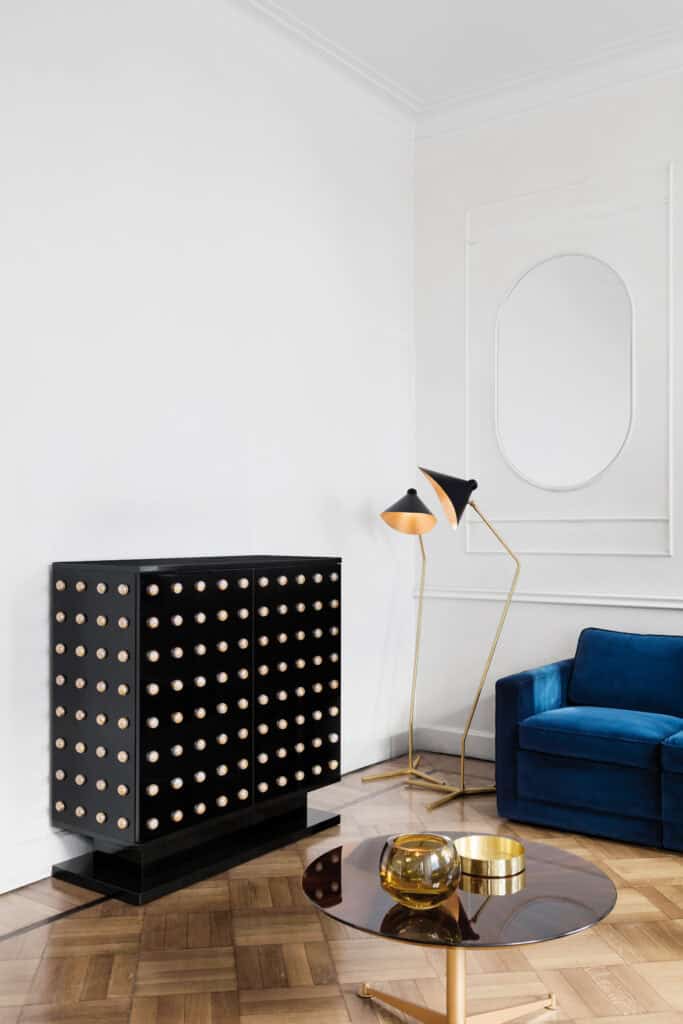
“We created this experience because we believe design doesn’t begin in a showroom; it begins in a story,” says Goddard.
Warnock reflects, “The concept evolved from decades of specifying furniture for clients based more on aesthetics than craftsmanship or materials. When you get to the source of production, to the human and raw materials behind the designs, it changes how you specify for projects. It changes how you respect it.”
The journey unfolded through historic cities and hidden studios, each stop revealing a layer of Italy’s creative DNA.
Rome: Drama, Devotion, and Design History
Rome greeted the group like a grand stage. At the Pantheon, sunlight spilled through the oculus and fell onto ancient stone. Two thousand years of design held its breath in that moment.
A short walk away, Galleria Doria Pamphilj revealed living history. The palace remains a private home to the Doria family, filled with masterpieces by Caravaggio and Velázquez. Wandering through mirrored corridors, the designers spoke quietly, as if entering a family memory.
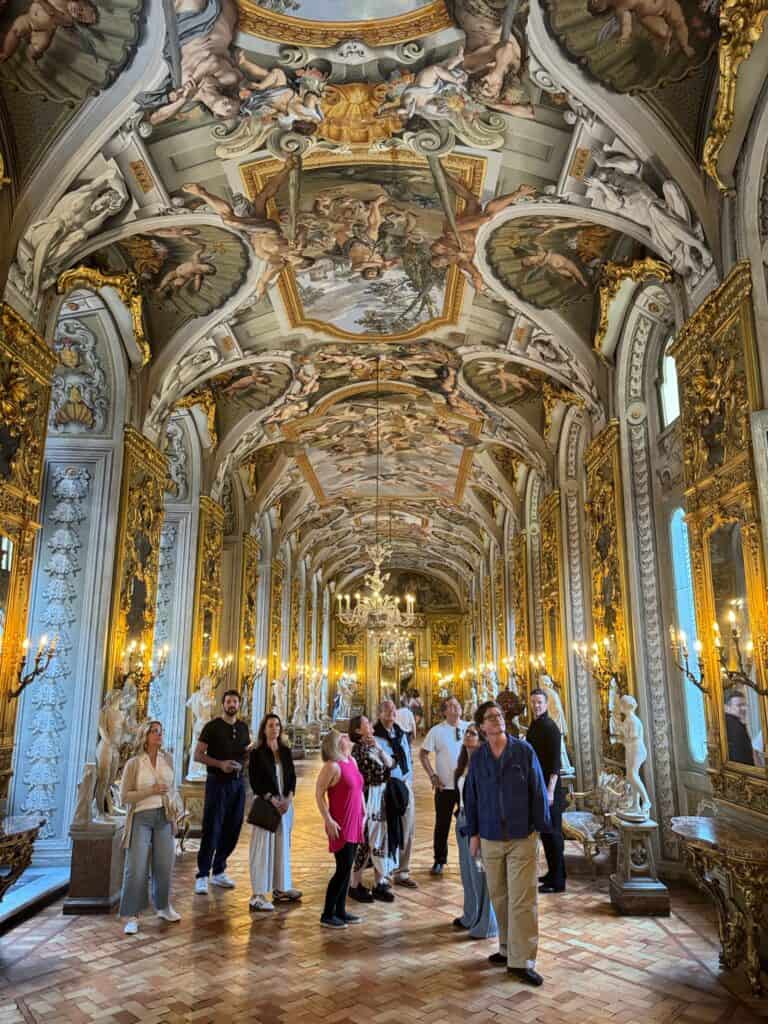
Lunch at Ristorante Nino, a Roman institution since 1934, carried its own ritual. Crisp linens, silver cutlery, and martinis chilled to perfection framed a menu that could silence conversation. Journalist and style icon Eleonora Attolico guided the group afterward through hidden mosaic and leather workshops where artisans shaped time into texture.
Material as Memory
At Soledad Twombly’s L’Archivio di Monserrato, antique silks and Ottoman robes hung like fragments of history. In fact, Twombly, known for reviving ancient techniques, spoke of material as memory. As one might expect, the atmosphere felt like stepping into another century. One designer touched a woven textile and said, “This is where story becomes fabric.”
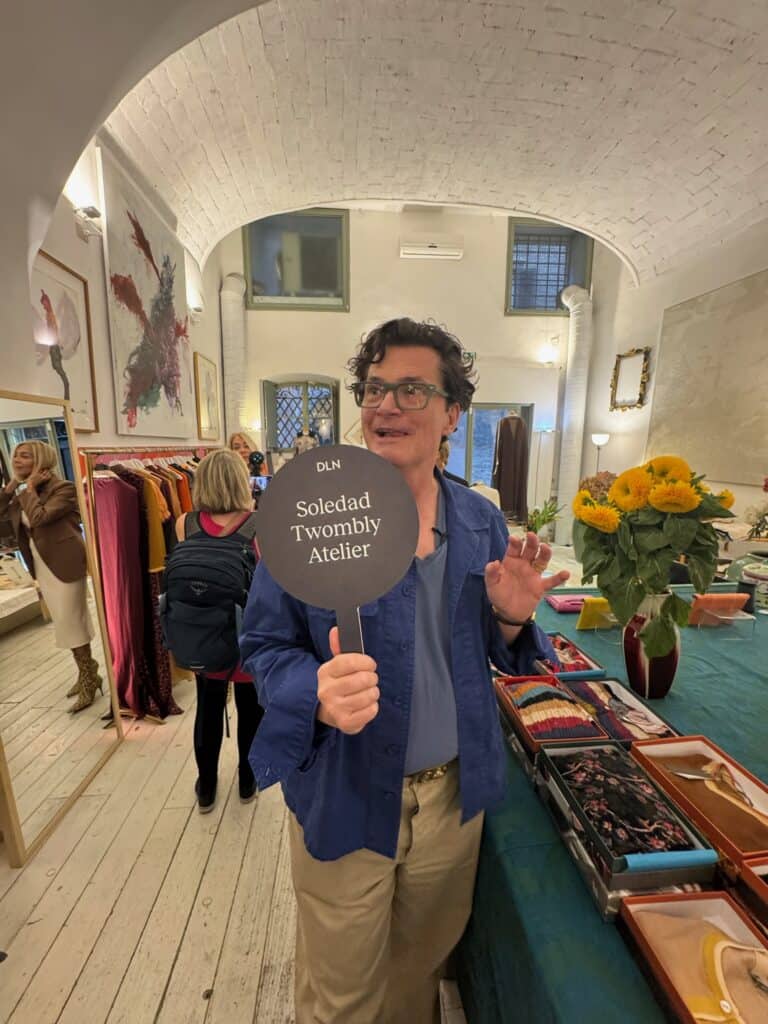

Meanwhile, across the city, Juliette Calaf of Juliette Calaf Interiors reflected on the day. “Rome cracked us open right away,” she recalls. “One moment you’re looking at Caravaggio, and then suddenly, you’re touching leather that’s been made the same way for 300 years.” Indeed, the city itself seemed to blur time, linking craft and emotion in every gesture.
Later that evening, the day ended with a private tour of Monitor Gallery, guided by owner Gabriele Gaspari. There, the group viewed the work of Portuguese artist Diogo Pinto. As a result, the conversation drifted between light, material, and meaning, while glasses of wine caught the glow of the gallery lamps. Ultimately, it was the perfect close to a day steeped in art, history, and human connection.
Florence to Carrara: From Quiet Mastery to Monumental Beauty
Florence unveiled itself with effortless poise. The group stayed at Tenuta Di Forci, a restored farmhouse near the historic city, draped in vineyards, where mornings glowed in soft Tuscan light and the scent of the vines lingered like perfume. Pastries and fresh juice appeared as the cypress trees began their daily performance, a quiet ballet of calm before the creative whirlwind ahead.

Venturing into Inside hidden ateliers, to see artisans working with near-sacred precision. Mosaics took form tile by tile. Leather was cut, stitched, and burnished until it seemed to breathe. Florence offered no spectacle; it offered intimacy. At the Uffizi Galleries, Botticelli and Michelangelo reminded everyone that mastery is labor measured in patience.
North in Carrara, the group traded cobblestones for mountain roads. A convoy of jeeps climbed through mist and marble dust until the mountain itself opened. Inside the quarry, light bounced off forty-meter walls of veined stone. Pools of water reflected the glow in perfect stillness.
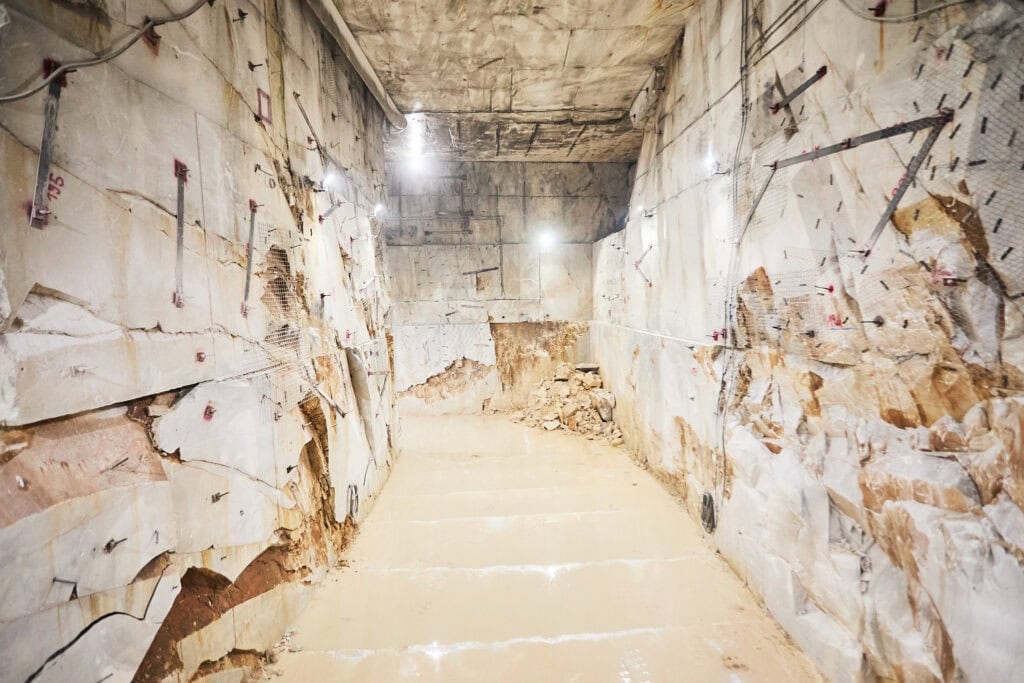
“I’ve worked with Carrara marble for years,” says Cathy Tonks, CEO of Designs With You In Mind, “but standing inside the mountain, surrounded by it, changed how I’ll look at it forever.”
Hands brushed along the cool marble, fingertips tracing veins of ancient seabed turned to crystal. The scale, the silence, the permanence left everyone still.
Prato: A Conscious Look Ahead
In Prato, innovation greeted the group with quiet confidence. The visit to Lottozero, a textile research laboratory and creative hub, offered a glimpse into the future of Italian design, one woven from equal parts science and soul. The bright, open studio felt like a cross between a gallery and a workshop, with looms, felting machines, and swatches neatly laid out as if waiting for the next experiment to begin. Recycled fibers and circular systems filled the conversation, each sample revealing how tradition and technology continue to evolve together.
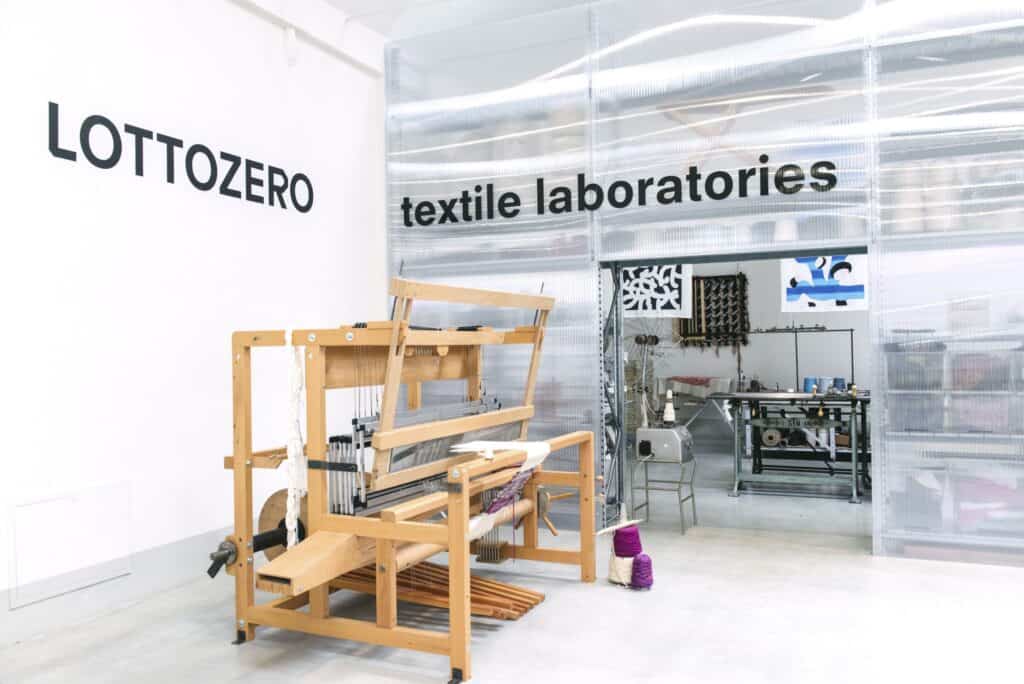
These textiles spoke not only of sustainability but of imagination. The team behind Lottozero explained how new materials are born from remnants and reinvented for endurance, a kind of poetic recycling that feels distinctly Italian. The designers moved from table to table, studying textures and patterns, tracing possibilities across the woven samples with a kind of reverence.
“What inspired me most wasn’t just the technology; it was the philosophy,” says Heather Hunter of Poppy Design. “Nothing is wasted. Everything becomes something again.”
From fiber to form, the road to Milan unfolded as a living conversation between craft, conscience, and innovation.

Milan: Curated Brilliance Italian design craftsmanship
Arriving in Milan felt like coming home. Subsequently, checking into the Principe di Savoia offered a glimpse into the refined world of Antonio Sala, whose recent redesign transformed the Belle Époque landmark into a study in contemporary Milanese elegance. At the same time, sculptural lighting, balanced palettes, and a quiet opulence revealed his ability to merge heritage with modern grace.
Consequently, Milan radiated a creative pulse where curiosity met craft. At first glance, the city seemed composed of marble and motion — yet, nonetheless, it breathed humanity. The first stop, Nilufar Depot, the grand dame of Italy’s design scene, felt like stepping into a living archive of beauty. Thereafter, every object appeared perfectly placed, each space composed in light and proportion, hence becoming a dialogue between eras.
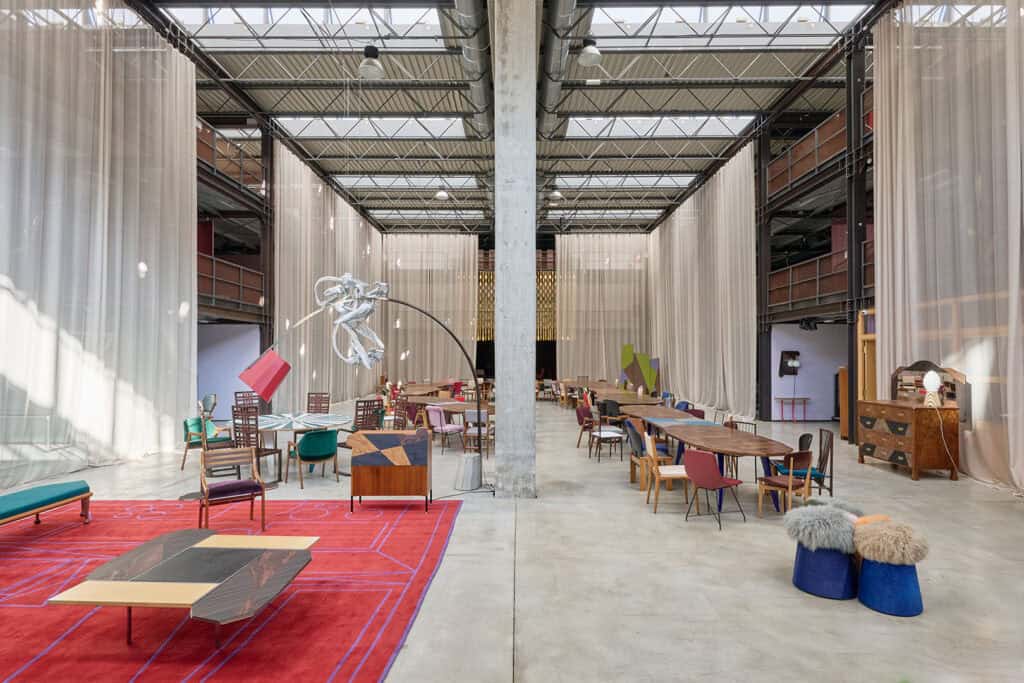
At Amini Carpets, Gio Ponti’s geometric designs were translated into wool, where architecture softened into texture and history met handwoven precision. “Amini showed us that geometry can have warmth,” said Chris Goddard. “It reminded us that pattern and proportion are emotional languages.”
Modern Living, Italian Soul
The group later gathered for an aperitivo at Dom Edizione, inside an apartment designed for living rather than display. The company’s influence extends far beyond Milan, crafting interiors for Louis Vuitton Cafés around the world, where comfort and couture-level detail coexist effortlessly. “Dom Edizione embodies what I love most about Italian design,” noted Jim Warnock. “It’s elevated but approachable. Everything feels touched by hand, even in the most refined spaces.”
A visit to Contardi Lighting revealed another dimension of Milanese refinement. Known for its “Couture of Light,” Contardi merges craftsmanship and technology, producing lighting entirely in Italy with a focus on sustainability and timeless design. Inside its showroom, designers explored how light defines space, texture, and emotion—how illumination itself can be a form of architecture.
Tuscany: Craft, Culture, and the Art of Outdoor Living
The Tuscan light changed everything. At Ceccotti Collezioni in Cascina, furniture emerged from wood like sculpture. Founded in 1956 by Giovanni Ceccotti, the family-run house still works in its original workshops, shaping walnut and ash by hand. Sustainability guides each process, from solar-powered facilities to repurposed wood waste. The Star Trek Chair and Bean Desk illustrated their devotion to proportion and patience.
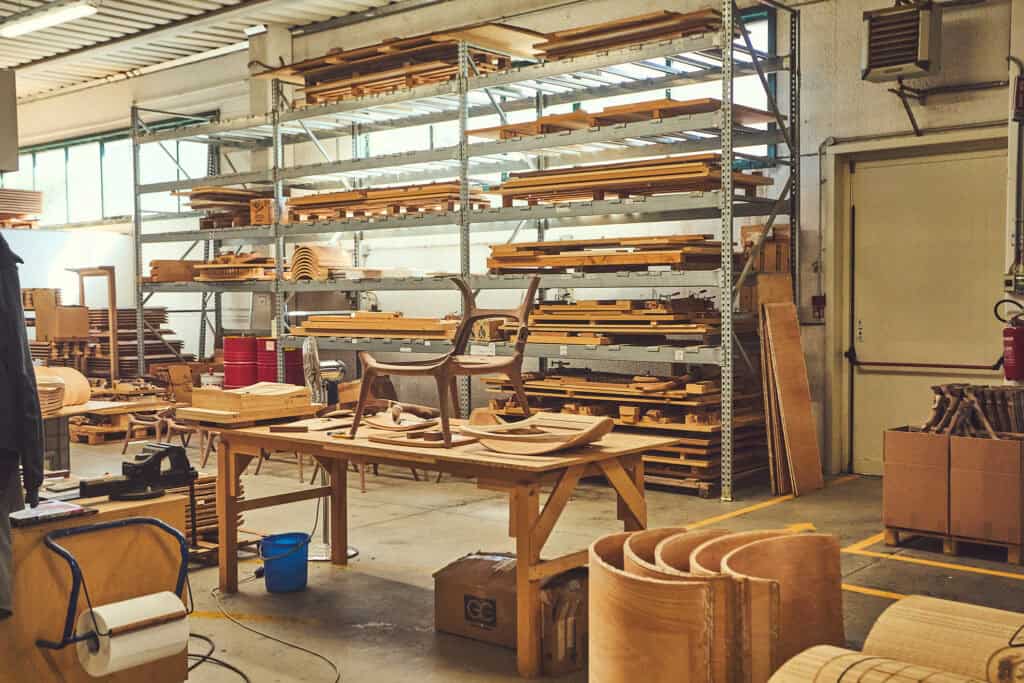
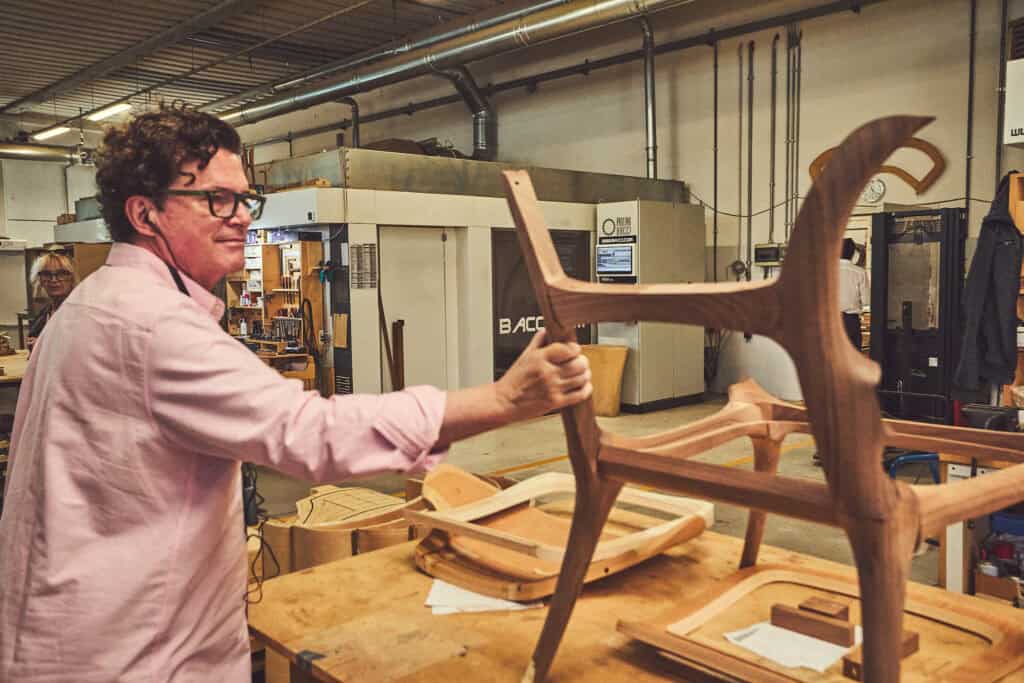
Nearby in Brianza, Porada, founded in 1948 by Luigi Allievi, continues its family legacy with furniture that celebrates the soul of wood. The company sources walnut and oak from responsibly managed forests, finishing every surface by hand until it glows. “Ceccotti and Porada opened their doors and their minds,” says Goddard. “We truly felt like collaborators, not just visitors.”

At Talenti, founded by Fabrizio Cameli, craftsmanship and innovation came together under the Tuscan sun. Here, metal and fabric met with the precision of architecture and the soul of slow living. “Seeing Talenti’s process up close changed the way I think about outdoor furniture,” says Jim Warnock. “Every weld, every stitch had intention, and their hospitality reminded us that great design always begins with generosity.”
“The craftsmanship was precise and poetic,” adds Chris Goddard, “but it was their warmth that stayed with me.”
Tuscan Culinary Masterclass
Then lunch, hosted by Talenti at San Cristoforo, could have doubled as a masterclass in atmosphere: truffle risotto, Franciacorta bubbles, and sunlight drifting through the vines. It was one of those long Italian lunches that felt like it might never end, and no one wanted it to.
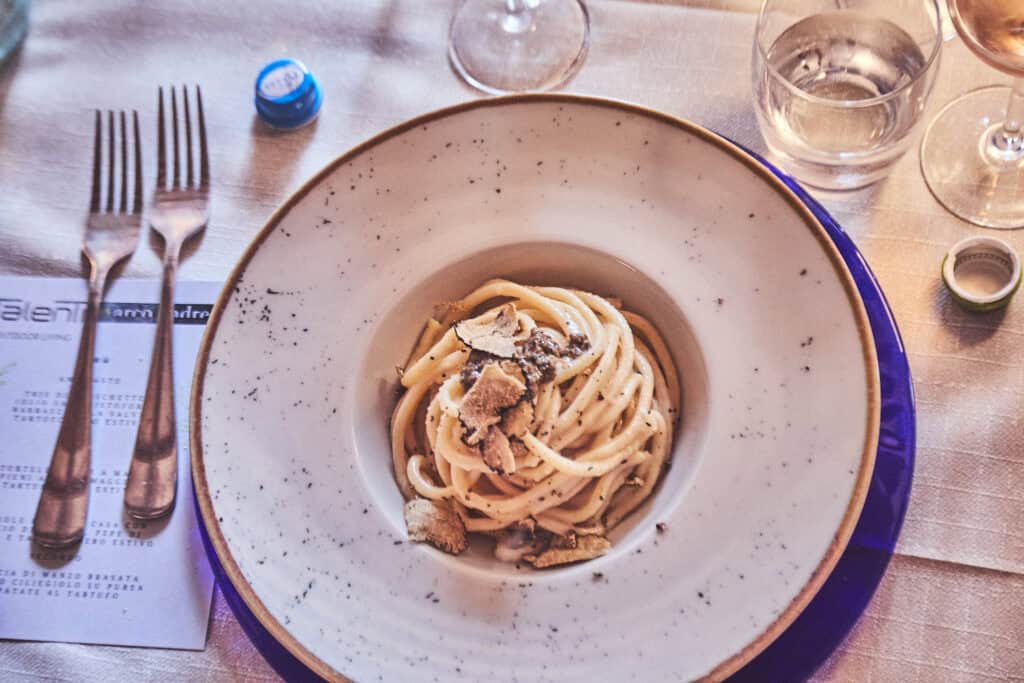
The following day, Villa Torrigiani glowed like a painting come to life. Vittoria Colonna, a descendant of the historic family, welcomed the group for a private tour through centuries of history. They wandered the gardens where every hedge and fountain seemed perfectly composed, as if the estate itself were performing. Inside, frescoes and family portraits told stories of elegance, endurance, and the kind of beauty that only time can create. Meanwhile, there was laughter, awe, and just enough Tuscan magic to make everyone forget what century they were in.
“The luxury wasn’t just in the places,” reflects Elyssa, “it was in the curation. Every stop and every artisan was chosen with care.”
The Takeaway on Italian Design Craftsmanship
Ultimately, design lives in material: in the curve of a chair, the weight of marble, the thread of a centuries-old textile. In other words, it thrives through human touch and the repetition of craft. Moreover, Straight to the Source brought designers face to face with that truth, from Roman ateliers to Tuscan vineyards. As a result, each encounter became a dialogue between past and present, reminding everyone that design is, above all, a living language.
“This trip made me fall back in love with my craft,” says Goddard. “I remembered why I started.”
Italian design craftsmanship Curated. Connected. Created at the source.
Check out Cultural Commerce
Share this post
Patrick Duffy is the founder of Global Fashion Exchange, a company catalyzing positive impact through strategic consulting roadmaps focusing on supply chain transparency, worker rights, responsible production for B2B as well as consumer facing programming and community building focusing on aligning people or communities with the SDGs.
Experience developing networks and activating ideas, guiding creative teams globally, and working with institutions like the Victoria and Albert Museum and UNESCO, and iconic spaces such as Federation Square Melbourne, Madison Square Garden, Bryant Park in New York City, and The Dolby Theatre in Los Angeles.
Patrick has produced clothing swaps all over the world from, with GFX Active in over 100 countries. Each GFX event focuses on building community, education and transformational business models. Partnering with global brands, key stakeholders, and academia to help create awareness and positive impact through conscious consumption
Patrick harnesses the power of media to create positive social and environmental impact. Through storytelling, education, and advocacy, he raises awareness, inspires action, to catalyze change. By highlighting issues and solutions, Patrick creates strategic campaigns to engage audiences, influence attitudes and behaviors, and contribute to a more sustainable and just world. Additionally, Patrick is the Sustainability and Positive Impact Director of Paris based @IRKMagazine and Editor In Chief of @IRKLiving
Patrick has produced and co-curated events and marketing/PR campaigns for recognized brands across art, fashion, and tech spaces including @virginhotels @britishfashioncouncil @mspdid @moethennessy @microsoft @lagosfashionweekofficial @perutradenyc @fashionimpactfund @istitutomarangonidubai @peaceboatus @lisboafashionweek and more spanning 15 years and hundreds of events in 5 continents.
Read Next




